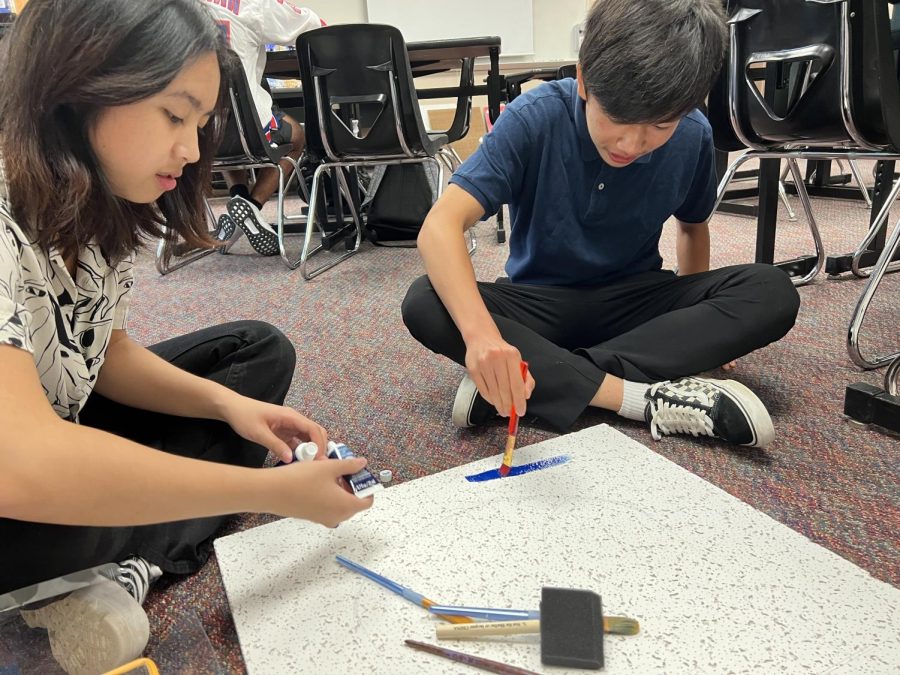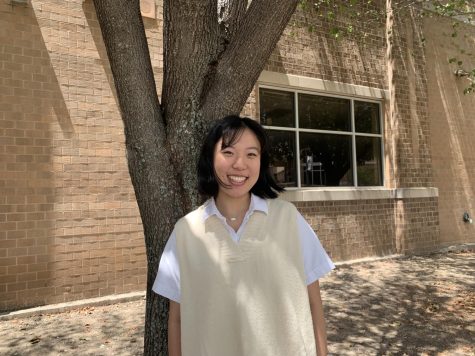Pre-calculus students paint the school
Each year, precalculus students end the spring semester with painting a ceiling tile. “We like the ceiling tile project because it directly correlates to the state standards of conic sections for what the students need to know in precalculus,” advanced precalculus teacher Julia Ridgway said.
May 18, 2022
With the school year coming to a close on Friday, pre-calculus students on campus are finishing up their grades with a project that will hang above Redhawks in the hallways and classrooms. For the project, students are graded on having the correct usage of a circle, ellipse, hyperbola, and two parabolas incorporated in a drawing of their choice, whether that be a cartoon character or album cover.
“A conic section is formed by the intersection of a plane with a right circular cone. The type of curve produced is determined by the angle at which the plane intersects the surface of the cone,” pre-calculus teacher Simone Symmank said. “We use this project to assess the students at the end of the unit [as] the best way to see if a student understands the material is to see if they can create something based off the knowledge they gained.”
By allowing students to decorate ceiling tiles, the project brings about a new change in a typical pre-calculus class.
“Often in math classes, we have to assess if students can solve a problem, but this is one topic where it is easy to allow the students to be creative, and we are still able to see if they have a good understanding of the concept,” Symmank said. “There is not just one answer. The students make the graphs, and then, they must create the equations that go along with the graphs.”
For junior Shannon Christian, the project was a nice change from the quizzes and tests that the class normally demands.
“Pre-calculus was one of my only classes this year that was pretty strictly quizzes and tests, as we did not do much outside of that,” Christian said. “Thus, being able to work on a project over a period of time was an extreme change of pace.”
Not only does the project provide a break from the demands of the class, but also allows students to collaborate with each other and express their ideas.
“This project was definitely more hands-on and enjoyable as I [enjoyed] working with my partner,” junior Mika Lal said. “I also like working on big paintings because I don’t really do them that often.”








